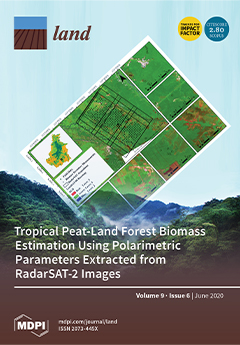Resource information
Sandification has become a major obstacle to China’s regional farmland protection, economic development, and ecological civilization construction. It is urgent to adopt advanced ideas and practical actions to reverse the sandy land. Structural consolidation theory was introduced to rehabilitate sandy land into farmland by soil body building, soil layer reconstruction, and soil quality improvement. A field experiment was conducted in Mu Us Sandy Land to explore the effects of blended guest materials (red clay and loess) with sand at four volume ratios (1:1, 1:2, 1:3 and 1:5) on crop yields, soil properties, and root growth. Red clay and loess significantly increased clay and silt contents and regulated the soil total nitrogen concentration and organic matter content during the critical growth stage of maize. Red clay and loess had a significant promotion of maize and soybean yields at a volume ratio of 1:3. The maximum potato yield was 42,501 and 37,332 kg ha−1 in red clay treatment at a volume ratio of 1:5 and in loess treatment at a volume ratio of 1:3, respectively. Lowest root biomass in surface soil and surface/subsoil root biomass ratio mediated maize growth in red clay treatment. Red clay was considered as the better material to rehabilitate sandy land and develop agriculture in the long-term according to the engineering costs and crop yields. Water sustainable utilization strategies and potential popularization areas of sandy land structural consolidation should be enhanced in the future.


